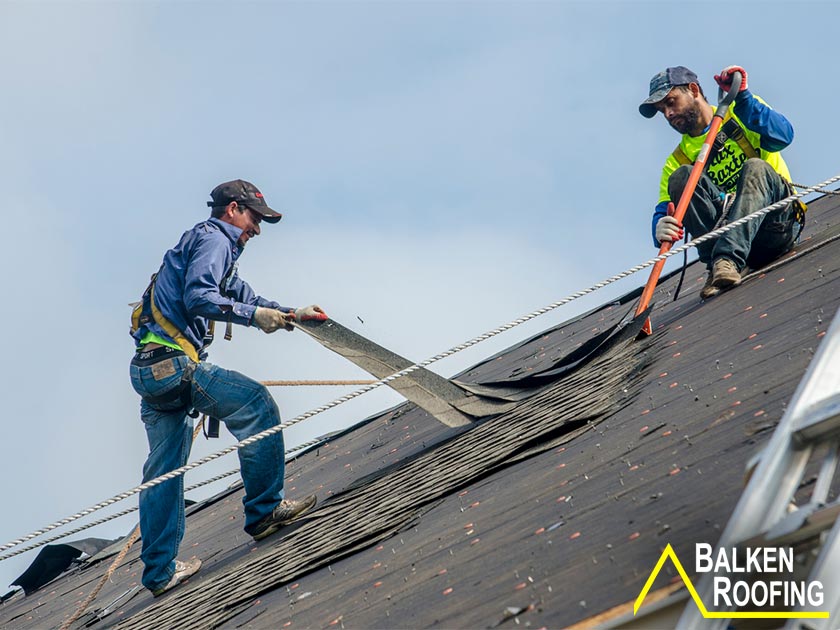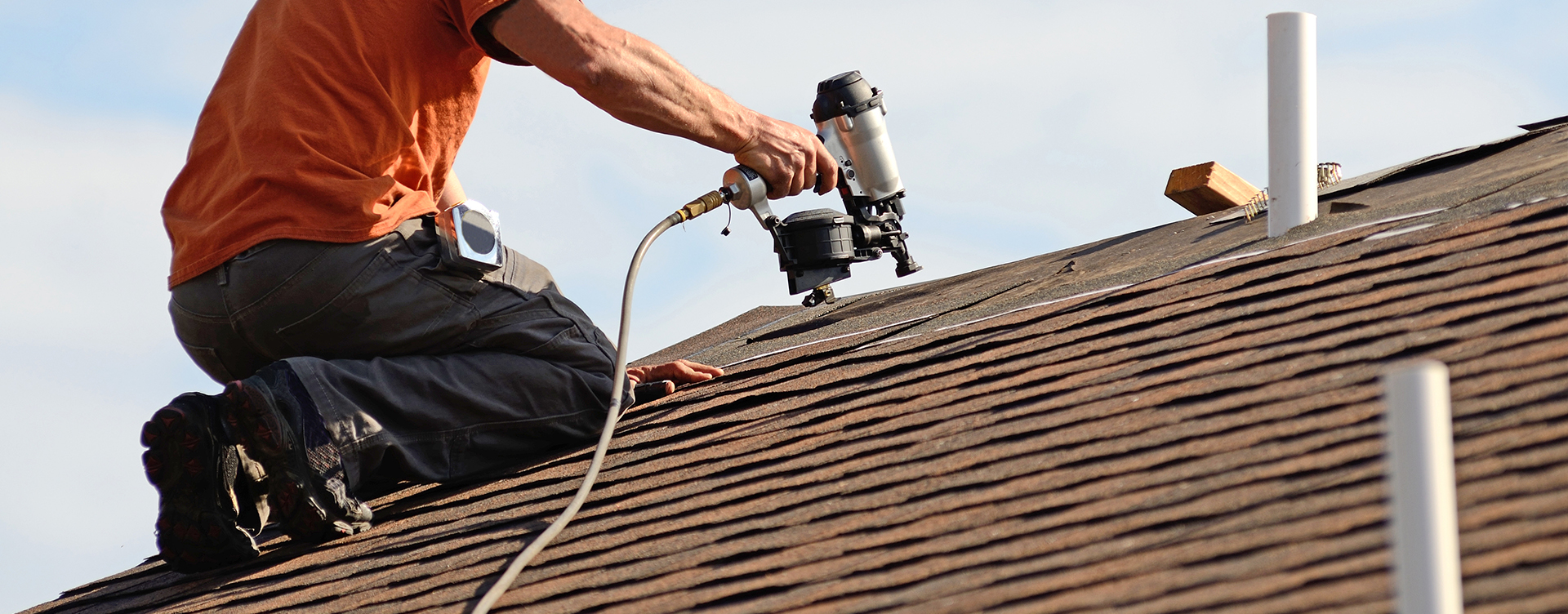Insider Tips from Trusted roofing contractors honolulu
Wiki Article
The Ultimate List for Roofing System Install: Ensuring High Quality and Longevity
The procedure of installing a roofing system requires careful focus to detail. A detailed checklist can assist assure high quality and longevity throughout the project. From evaluating the existing roof covering condition to picking the appropriate products, each step is crucial. Correct prep work and tools play a vital function in achieving an effective installment. Numerous overlook the importance of final evaluations and continuous maintenance. Comprehending these elements can considerably influence the longevity of a new roofing.Assessing Your Present Roofing Problem
Exactly how can one properly identify the condition of their existing roof? A comprehensive assessment is vital for evaluating a roof's integrity. House owners should start by taking a look at the roof covering from the ground, trying to find noticeable indicators of wear such as missing out on tiles, sagging areas, or discoloration. Closer inspection can be done by accessing the roof covering itself, where one need to inspect for cracked or curled shingles and examine blinking around vents and chimneys.Additionally, the inside of the home warrants focus; water spots or mold growth on ceilings and walls may show leaks. Attic examinations can disclose potential issues, such as poor ventilation or signs of moisture.Regular analyses, preferably twice a year, can aid determine issues early and prevent expensive fixings. By recognizing the roof's current state, homeowners can make informed decisions about essential maintenance or replacements.Choosing the Right Roof Covering Products
When selecting roof materials, what aspects should homeowners think about to ensure a durable and efficient option? First, the environment plays a substantial role; materials must endure neighborhood weather condition problems, whether it's heavy rain, snow, or intense sunlight. Next off, the long life of the product is vital; alternatives like steel or slate deal extended life-spans compared to asphalt shingles. House owners ought to additionally evaluate the material's weight, as this can impact the architectural integrity of the home. In addition, looks matter; the chosen material must complement the overall architectural design. Energy efficiency is an additional factor to consider; some products mirror warm, minimizing air conditioning costs. Budget constraints will dictate options; while some products might have a reduced upfront expense, long-lasting sturdiness can lead to better cost savings. By considering these factors, home owners can make educated choices that boost their roof's quality and durability.Planning for Installment
Prior to the setup procedure starts, property owners have to ensure that their residential or commercial property is sufficiently prepared to fit the brand-new roofing. This prep work includes several crucial actions to ensure a smooth and reliable setup. Property owners need to remove the location around the house of any type of debris, tools, or furniture that can prevent gain access to for contractors. Additionally, it is crucial to inform next-door neighbors regarding the forthcoming work to decrease interruption and secure cooperation.Next, home owners ought to examine their existing roof covering and architectural components, attending to any kind of prospective concerns such as rotting timber or leakages that might affect the installment. Safeguarding necessary permits and adhering to neighborhood building codes is necessary for compliance and safety and security. Lastly, setting up the installment during desirable climate condition aids protect against hold-ups and warranties that the job profits without difficulties. Appropriate preparation establishes the foundation for an effective roof task, ultimately improving the durability and effectiveness of the new roofing system.
Crucial Tools and Tools
In roof covering installment, having the right tools and devices is vital for a successful job. This includes essential security gear, numerous roof covering installment devices, and efficient material dealing with tools. Appropriate preparation and choice of these products can significantly improve effectiveness and safety on duty website.Security Equipment Needs
Security equipment is a vital element of any roof installment task, making sure the health of workers at raised heights. Vital security equipment includes construction hats, which safeguard against dropping particles, and safety goggles to protect the eyes from dust and fragments. Non-slip footwear is significant for preserving grasp on high surfaces, while harnesses and lanyards offer fall security, protecting against severe injuries. Handwear covers aid safeguard hands from sharp products and lower exhaustion during prolonged durations of work. In addition, high-visibility vests boost presence, advertising recognition amongst staff member and nearby workers. Using ear security might also be recommended in loud settings. Generally, adhering to safety gear requirements is vital for a secure and efficient roof setup process.
Roof Installation Tools
Proper safety procedures lay the groundwork for a successful roof covering project, yet having the right devices and tools is similarly vital. Vital devices for roof setup consist of a ladder, permitting safe access to the roofing system, and a roof covering nail gun to guarantee effective and safe and secure fastening of products. A chalk line is important for noting straight lines, while an energy blade is needed for reducing roof covering products accurately. In addition, a pry bar aids in eliminating old roof shingles. Workers must likewise have a level to validate appropriate positioning and water drainage. A good set of work handwear covers protects hands while providing grasp. Together, these tools assist in a smooth roofing process, boosting both quality and sturdiness.Material Handling Tools

A selection of product handling devices is essential for an effective roof setup procedure. Devices such as forklifts, lifts, and dollies facilitate the activity of heavy products like roof shingles and underlayment to the task site and onto the roofing system. Making use of scaffolding and ladders assurances safe access to elevated areas while reducing the threat of injury. Tarpaulins and bins are required for proper storage space and organization of products, protecting against damage and guaranteeing simple access. Furthermore, a crane might be required for bigger roof covering jobs to lift substantial materials straight onto the roofing. Appropriate training in using this equipment is essential; it improves process efficiency and contributes to total job security, ensuring an effective roof setup.
Step-by-Step Setup Process
The step-by-step installation procedure is vital for a successful roofing installment. It begins with preparing the roof covering surface area, followed by the proper installation of underlayment, and ends with the reliable protecting of roof covering products. Each of these steps plays an important duty in making sure the resilience and performance of the roof.Prepare the Roof Surface Area
Preparing the roof covering surface area is important for making certain a successful installation of roof covering products. This process starts with an extensive examination to identify any kind of existing damages or particles. Any loose shingles, sticking out nails, or old roofing products have to be gotten rid of to create a clean, smooth foundation. Next, the roof covering deck need to be inspected for rot or architectural concerns, as these can endanger the honesty of the new roofing. After repair services, a comprehensive cleaning is necessary; this includes sweeping away dirt, leaves, and any various other impurities that might hinder attachment. Making certain appropriate drainage and ventilation is essential, as these factors affect the durability of the roof. A well-prepared surface establishes the phase for suitable setup and longevity.Install Underlayment Appropriately
Installing underlayment properly is fundamental for improving the overall performance of the roofing system. The process begins with choosing the ideal underlayment material, which can include felt, artificial, or rubberized choices. Next, validate the roof covering surface is tidy and dry before laying the underlayment - honolulu roofing contractor. Begin at the cheapest point of the roof covering, turning out the underlayment flat and overlapping each row by at the very least six inches. It is essential to secure the underlayment in place with staples or roof nails, preventing voids or wrinkles that could jeopardize water resistance. Lastly, trim excess material at the sides, assuring a neat finish. This meticulous installment action is essential for providing an added layer of defense against moisture and boosting durabilitySecure Roof Materials Effectively
After validating the underlayment is correctly mounted, the following step includes protecting the roofing materials properly. Initially, the roofer must collect all essential products, consisting of shingles, nails, and blinking. Beginning at the lowest factor of the roofing system, shingles must be laid in a staggered pattern, verifying proper overlap to stop leakages. Each roof shingles should be fastened with nails, Bonuses using the maker's recommended spacing and amount. It is crucial to drive nails right, avoiding over-penetration, which can endanger the material. Blinking ought to be installed check over here around chimneys and vents to enhance waterproofing. Finally, the service provider needs to conduct a detailed inspection to confirm all products are securely attached, as this will greatly influence the roofing's overall durability and durability.Conducting Final Examinations
Detailed final assessments are necessary to guarantee that a newly set up roof covering fulfills all safety and top quality requirements. This important step involves reviewing the entire roof for any possible issues that might occur post-installation. Examiners must analyze the alignment of tiles, making sure they are correctly secured and without defects. Flashing and ventilation systems should additionally be reviewed for appropriate setup and functionality.Additionally, the inspector must inspect rain gutters and downspouts to confirm they are suitably placed to help with water drain. Any indicators of leaks, misaligned products, or poor sealing around penetrations need to be attended to immediately. Roofing professionals ought to additionally make sure that all debris from the installment procedure is gotten rid of, leaving the site tidy and safe. Performing these extensive assessments helps prevent future complications, ultimately extending the life-span of the roof and giving home owners with assurance regarding their investment.Preserving Your New Roofing
Proper upkeep is crucial for guaranteeing the long life and efficiency of a new roofing system. Homeowners must perform regular assessments a minimum of twice a year, ideally in spring and loss, to identify potential problems early. During these inspections, they should seek signs of damage, such as missing out on roof shingles, leakages, or particles buildup, which can restrain drainage and promote mold and mildew growth.Cleaning rain gutters and downspouts is necessary, as stopped up systems can result in water damage and structural issues. Furthermore, cutting looming branches can avoid abrasion and debris build-up on the roofing system surface.It's also a good idea to set up expert evaluations every few years to examine the roof's problem completely. Keeping records of upkeep activities and repair services can aid track the roofing system's performance gradually (roofing contractors honolulu). By sticking to a consistent upkeep regimen, home owners can protect their financial investment and assure their new roofing stays effective for years to findOften Asked Questions
The length of time Does a Typical Roofing Installation Take?
The duration of a normal roofing system installation varies based on elements such as roofing dimension, materials, and weather. Typically, it can take anywhere from one day to a number of weeks to finish the installment.Can I Install a New Roof Over an Existing One?
The concern of mounting a new roof covering over an existing one typically arises. Numerous property owners consider this alternative for cost-effectiveness, yet it is essential to review local building regulations and the architectural honesty of the existing roofing.What Permits Are Needed for Roofing System Setup?
Before installing a roof covering, one have to check local regulations. Usually, structure licenses are required, in addition to assessments to assure compliance with security standards and zoning legislations. Consulting with neighborhood authorities is crucial for proper guidance.What Warranties Are Available for Roofing Materials?
Various warranties exist for roofing materials, normally consisting of producer guarantees covering defects and efficiency. Additionally, some service providers offer craftsmanship warranties, guaranteeing installation high quality. Customers must thoroughly examine terms to comprehend coverage period and restrictions.Exactly How Can Climate Influence the Setup Process?
Climate substantially affects commercial roofing honolulu the installation process, as rainfall, snow, or extreme temperature levels can delay job, influence product adhesion, and concession security. Correct planning and scheduling around weather report are essential for successful roof covering installment.Report this wiki page